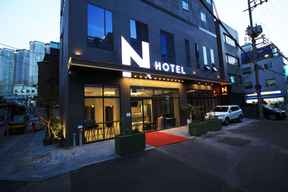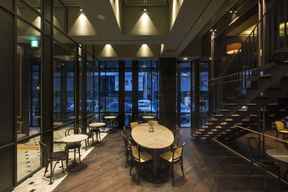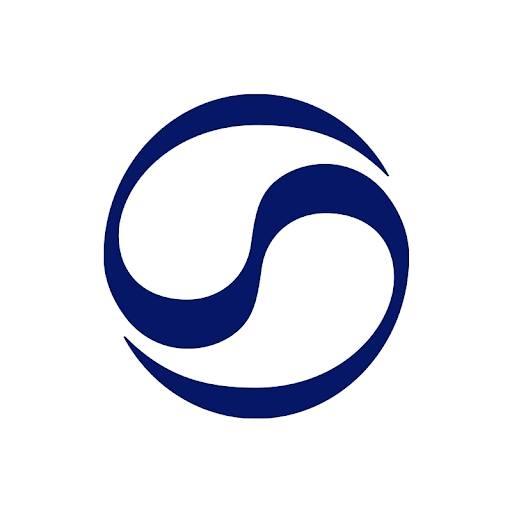
Cheap flights to South Korea
Save even more with our latest coupon
Code:HELLOTRAVELOKA
Flights to South Korea

FAQ When Booking Flight Tickets to South Korea
-
How to buy a ticket to South Korea?
-
Can I fly directly to South Korea?
-
How long does it take to fly to South Korea?
-
What are the airlines that fly to South Korea from Australia?
What Are the Most Searched Destinations Outside South Korea’s Major Cities?
After booking your flight, visit these attractions in South Korea:
-
Seoul
Seoul is the capital of South Korea and the most popular tourist, business, and entertainment center. You can explore many things, including Korean food, culture, and fashion. The best time to visit is spring or autumn. Don't forget to visit Nami Island during your vacation in Seoul.
-
Incheon
Not far from Seoul, Incheon is a city directly adjacent to Seoul. It is the busiest port and industrial city in South Korea. Nonetheless, you can find many exciting things like Eurwangni Beach, Wolmido Island, and Incheon Grand Park.
-
Busan
Busan is the second largest city in South Korea. This city offers dishes, nightlife, festivals, and culture to make your vacation more enjoyable. You should try Jimjilbang, a traditional Korean hot spring experience, during your vacation here.
-
Jeju Island
The most popular after Seoul is Jeju Island. This island holds a lot of history and culture that you can explore. The island is perfect for enjoying summer or even a honeymoon. Jeju is also famous for its fantastic food, especially black pork – the authentic pork of Jeju.
-
Daegu
Daegu is one of the cities in South Korea that is often considered a living form of traditional Korean culture. You can learn a lot about South Korean social life from time immemorial. In addition, you will also find many tourist attractions and tourist centers such as Apsan Park, Seomun Market, Dalseong Park, and Daegu Duryu Park.
What is the Main Airport in South Korea?
-
Incheon International Airport
Incheon International Airport is the largest airport in South Korea. It is the main airport serving domestic and international flights in South Korea. The airport has many facilities for travelers, such as spas, private bedrooms for transit passengers, golf courses, shopping centers, video game centers, cultural museums, and indoor parks. -
Cheongju International Airport
The airport is located in Cheongju and serves intercity and international flights. There are facilities in the form of shopping centers, rest areas during transit, and parking lots for up to 1,000 vehicles. The airport also has direct access to the Seoul city terminal by airport train with a travel time of about 1 hour. -
Jeju International Airport
Jeju International Airport is the second largest airport in South Korea. The airport was opened in 1968 and has served various domestic and international flights such as to China, Hong Kong, Taiwan, Malaysia, Singapore, and Thailand. -
Daegu International Airport
The airport is an international airport serving flights to and from Daegu. The airport offers passengers a comfortable atmosphere and environment with a traditional design that symbolizes Ouga. There are various facilities such as shopping centers, transit areas, rest areas, cafes, to parking lots that can accommodate up to 1,000 vehicles.
Travel to South Korea, What to Prepare?
To enter South Korea, you must have the necessary documents and forms. First, ensure that your passport will not expire within six months of your arrival. Additionally, obtain a visa from the South Korean embassy.
You will also need to apply for a K-ETA, an electronic travel visa, and register for a Q-code to make accessing various locations in South Korea easier. Finally, remember to get a SIM card for convenient access during your stay.
Time Difference Between Australia and South Korea
The time difference between South Korea and Australia is 1 hour. Australia is 1 hour ahead of South Korea. This difference also impacts day and night rotation, especially during summer and winter.
Best Things to Do in South Korea
- Shop
South Korea is well-known for its fashionable clothing and wide range of souvenirs. When you visit South Korea, go shopping for everything you need. Some places you can explore include Myeongdong Street in Seoul, Namdaemun Market, Gangnam Terminal Underground Shopping Center, Hongdae Shopping Center, and Itaewon. - Culinary tour
In addition to shopping, you can also taste a variety of South Korean specialties. There are many food streets and food markets that you can visit, such as Gwangjang Market, Dongdaemun Street, Myeongdong Street, to Gwangbokdong Food Street in Busan. - Palace Tour
Want to learn more about Korean history? You can visit various palaces that are still well-preserved in South Korea. You can visit Gyeongbokgung Palace, Changdeokgung Palace, Gyeonghuigung Palace, and Deoksugung Palace.
Frequently Ask Questions
Popular Airline
Popular Payments
For all your unique travel choices, we got you
Popular Routes
Popular Destinations
Popular Airline & Destination
Popular Airports
Popular Airlines






























































 Instagram
Instagram TikTok
TikTok Youtube
Youtube